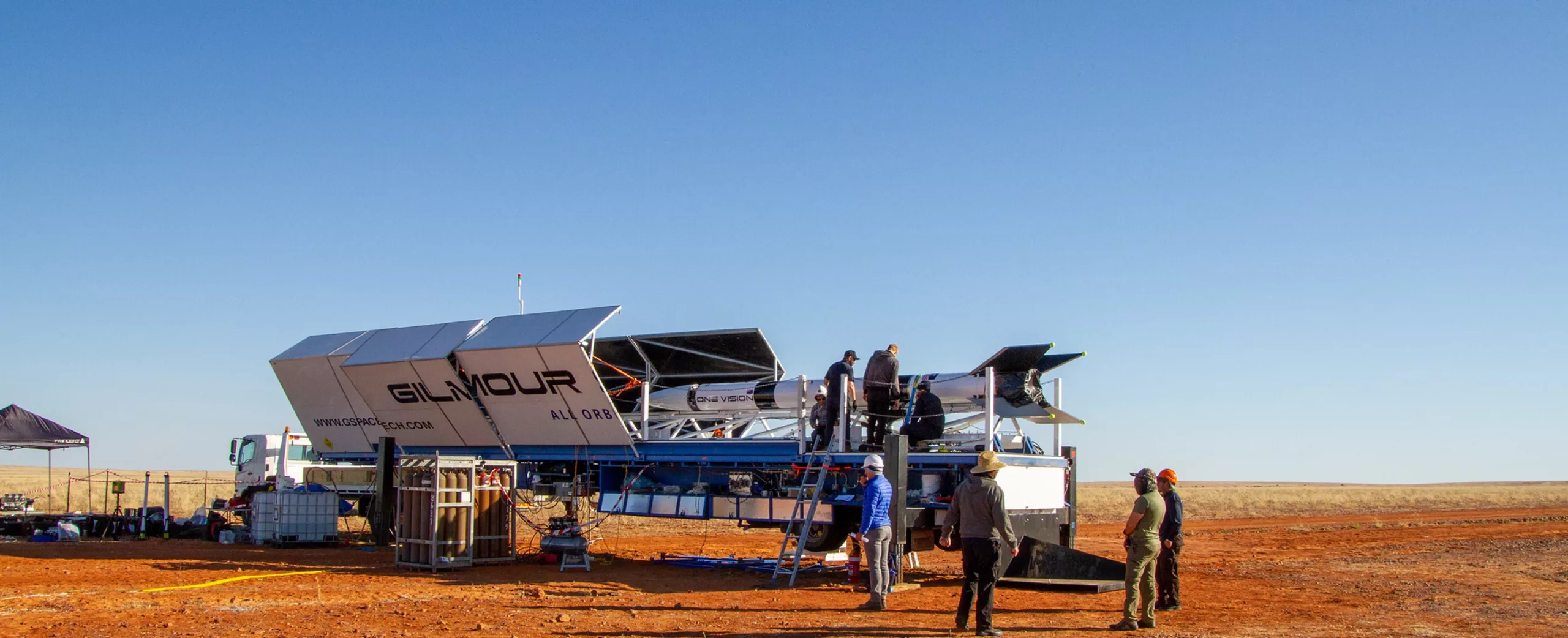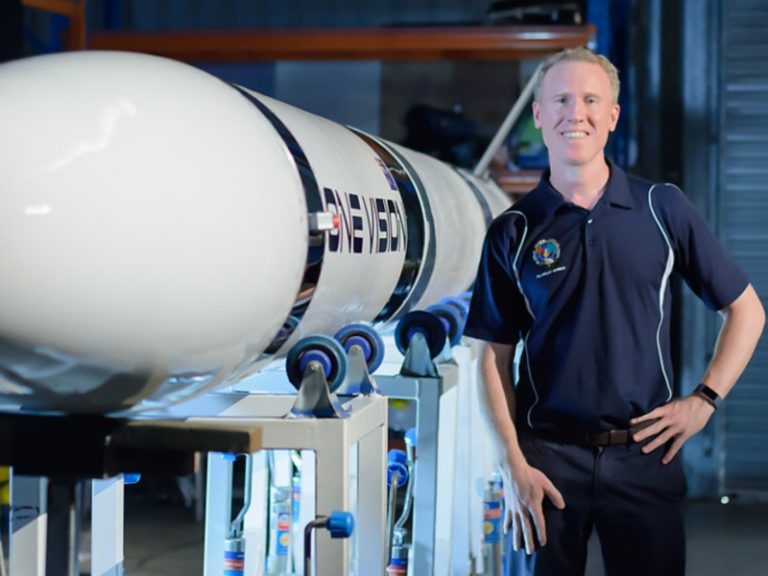As the private space industry continues to reinvent itself, driving a never-before-seen boom in orbital milestones, space technology, and investment, many countries are focusing on leveraging their own space sectors, including Australia. Leading the region with its emerging space startups, the country’s government has poured millions of dollars into the civil space sector and worked on ground-breaking launch sites, space manufacturing technology, and vibrant hubs for space-related work and activities.
Recognizing the growing market opportunities for new space products and services, more than 30 of Australia’s leading space manufacturers, universities, and supply chain companies have created the Australian Space Manufacturing Network (ASMN). The organization is supporting an AU$150 million ($109 million) bid for the Federal Government’s Modern Manufacturing Initiative Collaboration (MMI-C) grant to advance space technology manufacturing in Australia. And since most space manufacturing today involves 3D printing technology, the ASMN promises plenty of additively manufactured parts will go to its rockets and satellites.

Gilmour Space is preparing its rocket to launch small satellites to orbit in 2022. Image courtesy of Gilmour Space.
Led by Gilmour Space Technologies, one of Australia’s top space manufacturers, the ASMN will be a genuinely industry-led project that will provide the framework and infrastructure needed to unlock collaborations, create jobs and capability, attract private investment, and advance Australian space technologies from initial concept through to commercialization and launch.
With over AU$88 million ($64 million) raised since being founded in 2012, Gilmour Space is one of the country’s largest sovereign low-cost hybrid launch vehicle developers. The Queensland-based company plans to launch the first Australian-made rockets and satellites to low Earth orbit (LEO) starting in 2022. The company is highly immersed in 3D printing high-performance rocket and space components and received $3.7 million in investment funding in 2017 to develop its launch vehicles that use 3D printed rocket fuel.
Company founder and CEO Adam Gilmour told 3DPrint.com that “3D printing is now a mainstream manufacturing process for spacecraft. Everything from rocket nozzles, pumps, and fuel tanks, to mechanical structures and even housing boxes for avionics systems, can be 3D printed for space. Moreover, 3D printing machines and specialist engineers and technicians are a major component of the ASMN proposal.”
Starting August 2021, the Australian government opened up its MMI-C stream to help domestic manufacturing businesses collaborate, innovate and build economies of scale. The Collaboration stream is the largest component of the AU$1.3 billion ($945 million) Modern Manufacturing Initiative. Moreover, the Australian government will be a strategic investor prioritizing six key national manufacturing sectors to drive productivity and create jobs for Australians. Space is one of the six principal focus areas in this dynamic road map, with growth opportunities in nano and small satellites, launch vehicles, propellants and fuels, payloads, and the creation of plenty of space parts, such as structural components, optics, and sensors.
The ASMN aims to establish three new space facilities centered in Queensland. The first will be a standard test and manufacturing plant, enabling members to advance their space research and technology development at a lower cost. This is followed by an advanced manufacturing facility for building commercial rockets and satellites anchored to Gilmour Space and an orbital spaceport in North Queensland that will help launch many of these products to orbit.
Many Australian researchers and companies are already developing the technologies needed for a solid presence in the up-and-coming space economy, from satellites with sensors and cameras that detect bushfires within minutes to rockets that provide valuable access to space. However, Gilmour says the space industry is still very new relative to other industry pillars, and it lacks the funding and basic infrastructure to support it. This is why the ASMN’s grant proposal, which has already been submitted to the Department of Industry, Science, Energy, and Resources, is crucial for the domestic space segment to expand.
Among ASMN founding members is AM specialist Amaero, a Melbourne-based company established in 2013 with the support of Monash University to commercialize 3D printing of metals and alloy technologies developed by the Monash Centre for Additive Manufacturing (MCAM). The AM service provider is used to manufacturing large-format complex components in metal for clients in aerospace, defense, automotive, and tooling. While the Swinburne University of Technology is working with Melbourne-based metal 3D printing manufacturer Titomic Kinetic Fusion on space projects. The multimillion-dollar partnership will bring Titomic’s TKF1000 system to Swinburne, one of only two such 3D printing systems in the world, and will provide students, researchers, and industry partners a chance to create space vehicle parts with a rapid-build process.
Another company on the ASMN list that is leveraging 3D printing is Romar. In partnership with the Australian scientific research agency Commonwealth Scientific and Industrial Research Organisation (CSIRO), Romar became the first company in the southern hemisphere to offer AM using a DMG Mori Lasertec 65 3D five-axis synchronous laser deposition, welding, and milling machine. The service bureau offers customers advanced manufacturing options at its New South Wales site and expands its presence in the region thanks to AM machine acquisitions.
There are also a number of international space companies involved which are looking to set up operations in Australia and provide export and supply chain opportunities to local companies, such as SatRevolution from Poland, specialized in nanoBus platforms, subsystems, and nanosatellite. Additionally, the ASMN is supported by aerospace pioneers Airbus and Boeing (the list of ASMN companies is below).
“With the global space economy expected to grow to a trillion dollars by 2030, the MMIC will provide timely support for our emerging space manufacturers to develop and mature significant, and globally competitive, space capabilities in Australia,” commented Gilmour.
Full list of ASMN Founding Members: Gilmour Space Technologies, Electro Optic Systems, the Advanced Robotics for Manufacturing (ARM) Hub, Amaero Engineering, AROSE, Central Queensland University, Common, DEWC Systems, Earth Observation Australia, Freelance Robotics, Greatcell Energy, Griffith University, Hitech, Infinite Engineering, James Cook University, Laserdyne Technologies, LatConnect 60, Marand Precision Engineering, Myriota, Neumann Space, Regional Development Australia, Romar, SatRevolution, Space Machines, Space Services Australia, Spiral Blue, Swinburne University of Technology, TAFE Queensland, Queensland Robotics, Valiant Space, 3ME Technology.
Subscribe to Our Email Newsletter
Stay up-to-date on all the latest news from the 3D printing industry and receive information and offers from third party vendors.
Print Services
Upload your 3D Models and get them printed quickly and efficiently.
You May Also Like
Making Space: Stratasys Global Director of Aerospace & Defense Conrad Smith Discusses the Space Supply Chain Council
Of all the many verticals that have been significant additive manufacturing (AM) adopters, few have been more deeply influenced by the incorporation of AM into their workflows than the space...
EOS in India: AM’s Rising Star
EOS is doubling down on India. With a growing base of aerospace startups, new government policies, and a massive engineering workforce, India is quickly becoming one of the most important...
PostProcess CEO on Why the “Dirty Little Secret” of 3D Printing Can’t Be Ignored Anymore
If you’ve ever peeked behind the scenes of a 3D printing lab, you might have caught a glimpse of the post-processing room; maybe it’s messy, maybe hidden behind a mysterious...
Stratasys & Automation Intelligence Open North American Tooling Center in Flint
Stratasys has opened the North American Stratasys Tooling Center (NASTC) in Flint, Michigan, together with automation integrator and software firm Automation Intelligence. Stratasys wants the new center to help reduce...




































